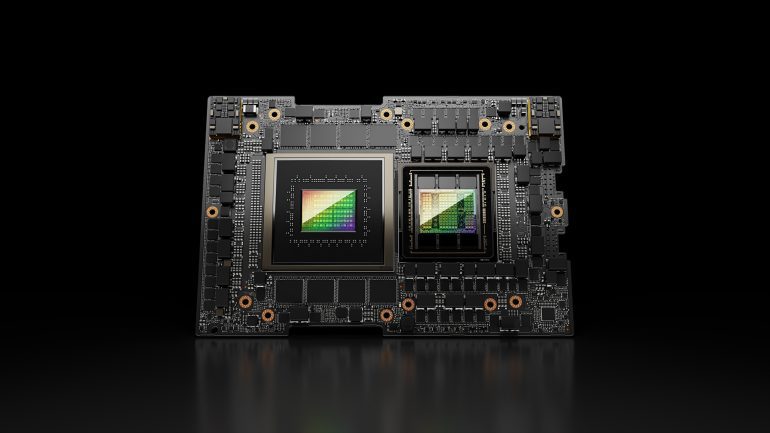- NVIDIA announces nine new supercomputers worldwide utilizing NVIDIA Grace Hopper™ Superchips for AI-powered systems, delivering 200 exaflops of processing power.
- Supercomputers include installations in France, Poland, Switzerland, Germany, the United States, and Japan, showcasing global collaboration and innovation.
- Sovereign AI initiatives drive the construction of more efficient, domestically-owned supercomputers, emphasizing the strategic importance of AI capabilities.
- Isambard-AI project in the U.K., powered by NVIDIA’s Arm-based Grace CPU and Hopper GPU architectures, accelerates open science innovation.
- NVIDIA’s accelerated computing platform combines Hopper architecture-based GPUs, Grace CPU Superchips, Quantum-2 InfiniBand networking, and AI/HPC software, empowering researchers globally.
Main AI News:
In a monumental leap forward for the high-performance computing industry, NVIDIA has unveiled a game-changing advancement with the introduction of the NVIDIA Grace Hopper™ Superchips. These groundbreaking chips are revolutionizing the landscape of AI-powered systems, propelling scientific research and discovery into a new realm of possibility.
The announcement heralds the deployment of nine cutting-edge supercomputers worldwide, each powered by NVIDIA Grace Hopper™ Superchips, collectively delivering a staggering 200 exaflops of energy-efficient AI processing power. This quantum leap in computational capability is poised to redefine the boundaries of scientific exploration and innovation across diverse domains.
Among the impressive lineup of supercomputers leveraging the transformative potential of NVIDIA’s technology are notable installations such as EXA1-HE in France, Helios in Poland, Alps in Switzerland, JUPITER in Germany, DeltaAI in the United States, and Miyabi in Japan. These supercomputers represent a strategic collaboration between NVIDIA and leading global institutions, signaling a unified commitment to pushing the boundaries of computational science.
The EXA1-HE supercomputer, a collaborative effort between the French Alternative Energies and Atomic Energy Commission (CEA) and Eviden, stands as a testament to the power of innovation. Equipped with 477 compute nodes based on the Grace Hopper architecture, the EXA1-HE exemplifies the convergence of cutting-edge technology and sustainable design, boasting a patented warm-water cooling system for enhanced efficiency.
Ian Buck, Vice President of Hyperscale and HPC at NVIDIA, underscored the pivotal role of AI in catalyzing transformative advancements across diverse fields, from climate research to drug discovery. Buck emphasized the indispensable contribution of NVIDIA Grace Hopper-powered systems in driving not only scientific progress but also energy efficiency—a cornerstone of sustainable computing.
The global momentum behind the adoption of NVIDIA’s Grace Hopper platform underscores the strategic imperative for nations to cultivate sovereign AI capabilities. Recognizing the strategic significance of domestically-owned and hosted data infrastructure, countries are investing in AI-based supercomputing to foster innovation and ensure technological sovereignty.
One such exemplar of sovereign AI is the Isambard-AI project spearheaded by the University of Bristol in the U.K. Leveraging NVIDIA’s Arm-based Grace CPU and Hopper GPU architectures, Isambard-AI embodies a paradigm shift in computational efficiency. Simon McIntosh-Smith, Professor of High-Performance Computing at the University of Bristol, lauded the project as a testament to the U.K.’s global leadership in AI, poised to accelerate open science innovation on a global scale.
The accelerated computing platform offered by NVIDIA comprises an integrated suite of cutting-edge technologies, including Hopper architecture-based GPUs, Grace CPU Superchips, Quantum-2 InfiniBand networking, and AI/HPC software. This holistic ecosystem empowers researchers and scientists worldwide to unlock new frontiers in scientific discovery, driving breakthroughs in fields ranging from data analytics to climate research.
As the world embarks on a new era of AI-powered supercomputing, NVIDIA’s Grace Hopper platform stands at the vanguard of innovation, heralding a future where the boundaries of scientific exploration are limited only by the bounds of human imagination. With each new installation, the promise of transformative discovery beckons, propelling humanity towards a brighter, more enlightened future.
Conclusion:
The introduction of NVIDIA’s Grace Hopper™ Superchips marks a significant milestone in the evolution of AI supercomputing. The widespread adoption of these chips by leading global institutions underscores a paradigm shift towards energy-efficient and AI-powered computing. Sovereign AI initiatives reflect a strategic imperative for nations to invest in domestically-owned AI infrastructure, signaling a shift towards technological self-reliance. NVIDIA’s Grace Hopper platform not only exemplifies technological innovation but also paves the way for transformative advancements across diverse domains.

